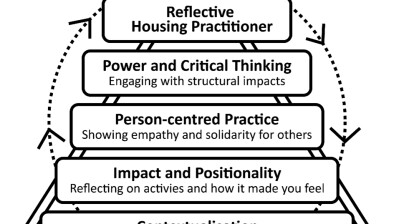Matthew Aitchison: Heat in Buildings Bill – time to prepare for new Scottish property energy efficiency requirements?

Matthew Aitchison
Matthew Aitchison, associate, valuation & advisory at Knight Frank Scotland, highlights the key points from the Scottish Government’s proposed Heat in Buildings Bill and shares what steps landlords and occupiers should begin to take to prepare.
The Scottish Government has released its much-anticipated consultation on proposals for a Heat in Buildings Bill, covering both domestic and non-domestic properties in Scotland, with the aim of it passing by May 2026. The document is designed to share policymakers’ current thought process and proposals for new laws and regulations around heating systems and energy efficiency measures that must be used in Scotland’s homes and workplaces.
The key point is that all properties in Scotland could be required to meet the Heat in Buildings Standard by complying with new regulations, which include a ban on polluting heating systems and meeting the Minimum Energy Efficiency Standard (MEES) – rules related to achieving certain Energy Performance Standards by given dates.
In practice, this means properties will need to use clean heating systems – for example heat pumps, electric storage heaters, or heat networks – by the end of 2045, which would replace polluting systems such as gas or oil-fired boilers and LPG tanks. Heat pumps are thought to be the most widely adopted alternative clean heating system, but heat networks will be encouraged where feasible – albeit they come with different challenges.
The Scottish Government is proposing to impose the polluting heating system requirements on those purchasing – rather than selling – a property, with a likely initial grace period of two to five years post-purchase. That said, the government is also considering giving powers to ministers that would require buildings to end their use of polluting heating at earlier points in time, such as when a boiler comes to the end of its lifespan.
From a MEES perspective, a new law requiring homeowners and private landlords to meet certain base specification standards is on the cards. Doing so may require the property owner to consider the installation of improvements such as cavity wall insulation, draught-proofing, and heating controls. Some households and businesses will be eligible for additional time, modified requirements, or even an exemption depending on the nature of their building or if they have mitigating circumstances preventing economical work.
For domestic properties, landlords will need to meet MEES requirements by the end of 2028 – even if they have installed a clean heating system – and failure to comply could prohibit the landlord from re-letting the property. Owner occupiers will need to comply with the MEES by 2034. However, if they have replaced their polluting heating system with a clean alternative, they will be deemed as compliant with the legislation and won’t be obliged to undertake MEES works.
The proposals do not intend on setting MEES for non-domestic properties in Scotland due to the complex and varied nature of commercial properties and anticipation that landlords will naturally invest in greener energy systems or improvements to enhance investment values. Still, there may be a requirement for MEES-compliance for ‘long-term leased’ – 20+ years – or properties capable of being leased on that basis.
The Scottish Government has explored different methods to ensure compliance, including the imposition of civil penalties, council tax or business rates premiums, or making it a prerequisite for lenders to condition mortgages or building insurance. While there is still a long way to go, this is a significant step forward and will herald some significant changes for energy use in property. Now that we have some welcome direction on a hotly discussed policy area, landlords and occupiers alike should begin to take steps to prepare for what lies ahead.








